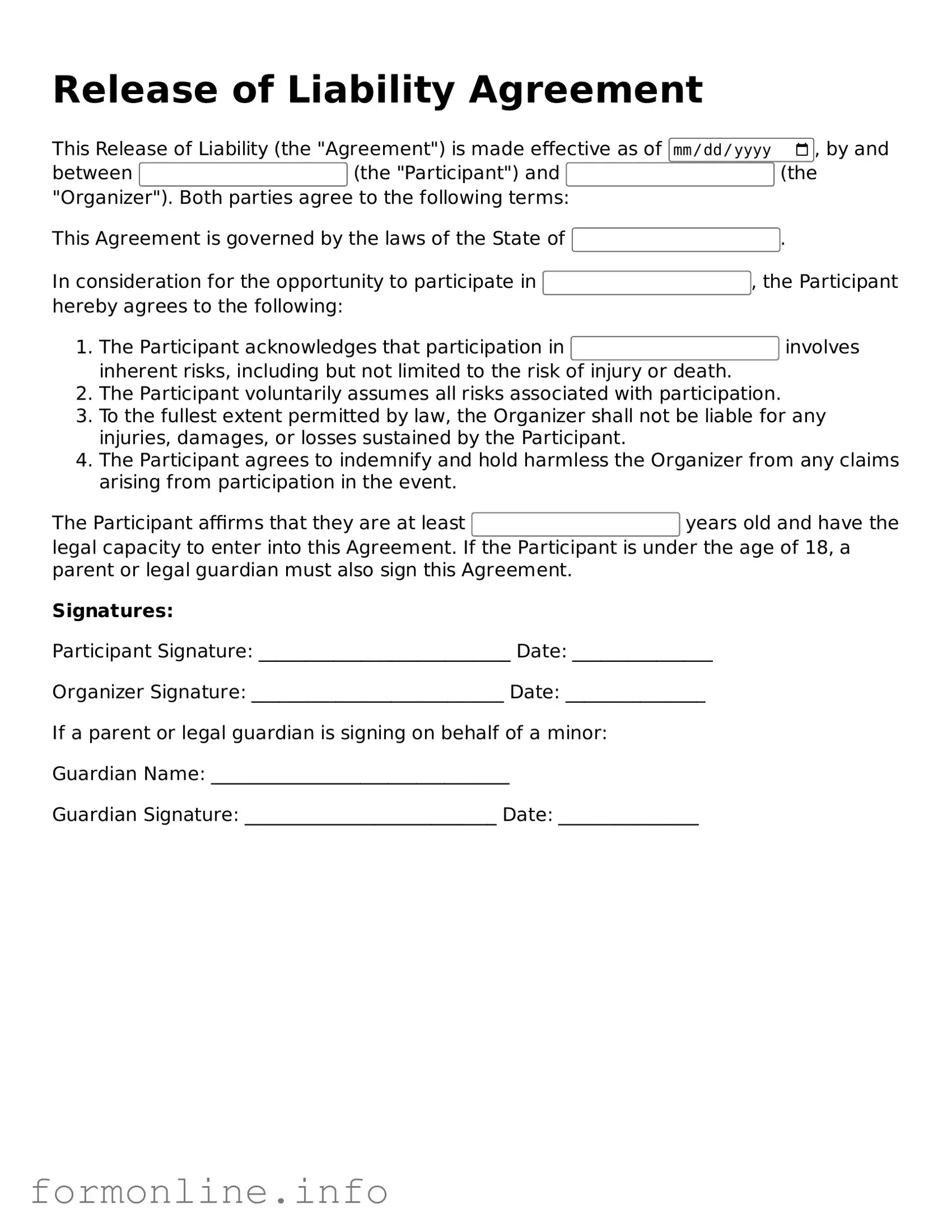Printable Release of Liability Form
A Release of Liability form is a legal document that protects one party from being held responsible for any injuries or damages that may occur during an activity. By signing this form, participants acknowledge the risks involved and agree not to hold the organizer liable. Understanding this form is crucial for anyone involved in activities where accidents might happen.
If you're ready to take the next step, fill out the form by clicking the button below.
Prepare Form Online
